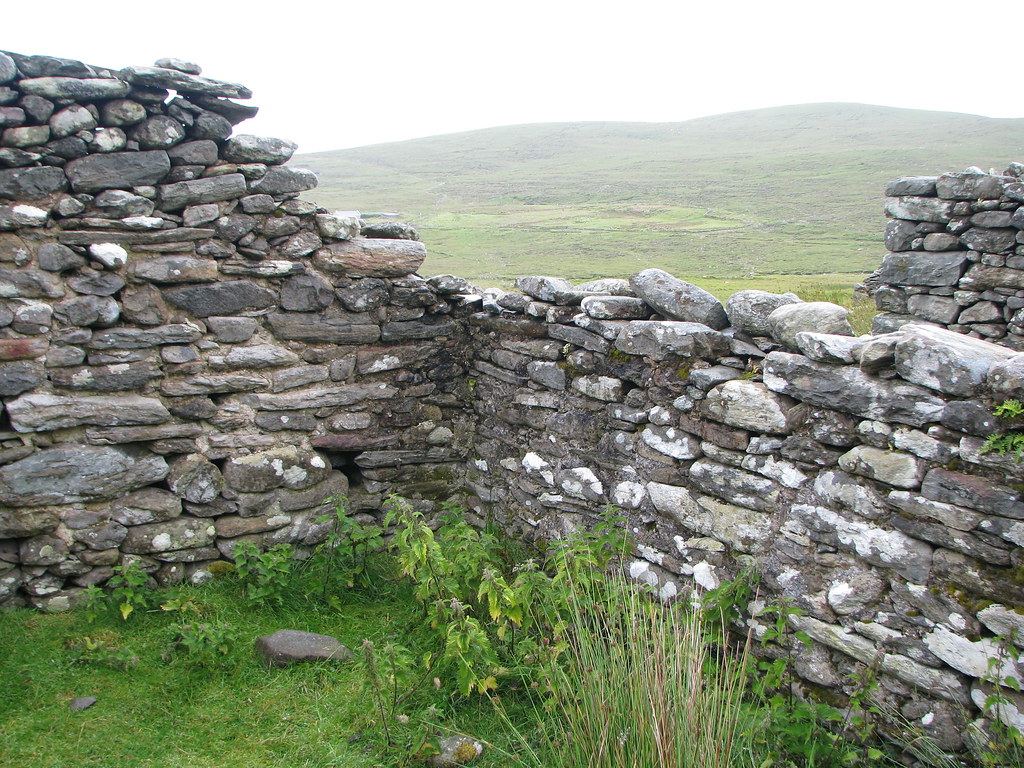Somewhere close to 8.2 million people lived in Ireland in 1841. Then came Phytopthora Infestans, a fungus-like microorganism that attacked Irish potato fields with a fearsome blight and utter devastation. The Great Famine killed more than a million people outright through starvation and disease between 1845 and 1850.
Two million survivors fled their native land to avoid similar fates in the immediate aftermath. Afterwards their population continued to bleed over multiple generations to North America and to Australia and to other accommodating places.
Today about 6.4 million people live on the Irish island. About 4.59 million live in the Republic of Ireland and 1.84 million in Northern Ireland. Possibly Ireland may reach the pre-famine population again by 2046, TWO CENTURIES after the initial calamity.
It’s not my purpose to delve deeply into the history and geopolitical underpinnings of the Great Famine. Plenty of sources with vastly greater knowledge and insight exist to fill that role. I approached the subject as an observer. I examined a small number of people and places left in its wake as they exist today.
Famine Cottage

Seemingly every town — for completely understandable reasons — had a famine museum or a memorial. Or maybe just the crumbling ruins of homes formerly occupied by those long gone. Visitors should tour at least one famine site during their journey. We found ourselves at the Famine Cottage at Slea Head on the Dingle Peninsula (map).
We’d explored far along the peninsula, almost all the way to the extreme western point on the Irish mainland. We wanted to see an Iron Age ruin, the Dunbeg Fort. Unfortunately a howling storm damaged the property earlier in the year, closing the site to visitors. So we could only see it from a distance.
However, a Famine Cottage operated as a roadside attraction practically at the same spot. Naturally we took that as a cue to stop there instead and walked through the property. This was an actual farm and homestead from the time period, not a replica. Historians restored it accurately to the time when people lived there during those dark years. Life would have been difficult on that windswept mountainside even during the best of seasons.
Slievemore Deserted Village

I think the ruins of the deserted village of Achill Island (map) had an even greater impact. It came complete with a cold foggy drizzle to heighten the sense of gloom and despair. This wasn’t a lone residence as we saw on Dingle, it was an entire settlement of a hundred homes.
Achill lay beyond the standard tour bus circuit. Nobody collected a fee. A mile of crumbling stone houses stood beside a barren path. We were alone at that spot except for our thoughts.
Excavations sponsored by the Achill Archaeological Field School confirmed that people had lived on the sheltered southern slopes of Slievemore mountain for several thousand years. Later a permanent village formed at the site during the early Medieval period.
“The houses were built of unmortared stone, which means that no cement or mortar was used to hold the stones together. Each house consisted of just one room and this room was used as kitchen, living room, bedroom and even stable. For many years people lived in the village and then in 1845 Famine struck in Achill as it did in the rest of Ireland. Most of the families moved to the nearby village of Dooagh, which is beside the sea, while some others emigrated.”
Residents abandoned their settlement rather suddenly. However, it survived for awhile as “booley” housing, a term for structures used during summer months while people tending to livestock. The practice of transhumance lasted longer on Achill than just about anywhere else in Ireland. In fact it lasted well into the 20th Century in remote places like Slievemore. Even so, the village never recovered. It slipped into complete abandonment as the years passed by, an eerie site on a gloomy day.
Family History

My great-grandfather grew up in Ireland in the decades after the famine, born at the family farm in Mountcollins, Co. Limerick in 1868 (map). An impoverished Catholic farm boy didn’t have to stray far to get into trouble during that era. So the family spirited him to Cork. There he boarded a ship heading to the United States, one step ahead of the authorities.
Thomas O’Connor left Ireland in 1888 and died in 1958, never returning to his homeland. This was such a common and permanent occurrence that the Irish referred to the situation generically as an American Wake. It was almost as if the person leaving had died. The United States became Thomas O’Connor’s new home.
He had 73 living descendants in his adopted land when he passed away, including a grandson named for him. Later there would be a great-grandson also named for him who would visit his boyhood home. Then he would post these words on Twelve Mile Circle.
We were fortunate to spend a day with our Irish relatives. Thus, my elderly father got a final chance to better understand his equally elderly second-cousins. They drove us to the small house where Thomas was born, now a rundown storage shed on a farm still owned by the family. Then we saw the church where he was baptized and the place where he went to school. We touched the gravestone of his parents. We read the family genealogy charts with so many stories of people who left for Texas, Kansas, Maryland, Nebraska, North Carolina, Washington DC, or just generally USA, often marked with the phrase “no further information.”
The Great Famine and the troubling decades afterwards changed Ireland profoundly, a tremendous turmoil that still reverberates. My family story differed little from a million others.

Leave a Reply